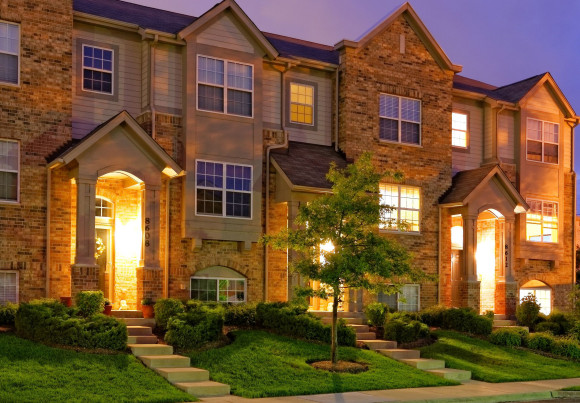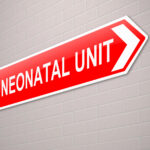Quite a few pieces must be in place to ensure no coverage gaps exist in either the condominium association’s or unit owner’s coverage picture.
Three questions must be considered by the agent writing the coverage:
- Who is responsible for what property?
- What is the value of the insured property?
- Who can be held liable for injury or damage?
This article discusses the property valuation considerations.
To find out more about property and liability coverage for condo associations and unit owners, visit: www.ijacademy.com/insurance-books, “Writing Property & Liability Coverage for Condos.”
Valuation
Statutes and even associational declarations differ on the valuation method required when placing insurance coverage on the association’s property.
Actual cash value (ACV), replacement cost (RC) and even market value are mandated options in statute and associational declarations and bylaws. Most statutes require actual cash value as recommended by the Uniform Common Interest Act.
Ohio statute (531116) requires the association property be insured based on fair market value and other statutes mandate replacement cost. Again, statutes are only the default setting.
Insurance limits should be no less than the amount developed when the valuation method required by the declarations is applied to the property.
However, replacement cost is recommended regardless of the amount required by statute or covenants, conditions and restrictions (CC&R’s).
Defined Values
Three distinctly different property “values” can be assigned to associational property: actual cash value, replacement cost and market value. Two are common to insurance, and one generally has no relevance in insurance, until the government or an unknowing attorney gets involved.
Actual cash value (ACV) is the cost new (replacement cost) on the date of the loss minus physical depreciation.
Physical depreciation results from use and ultimate wear and tear meaning that the insured does not get paid for the “used up” value of the property.
Attention must be paid to the beginning point in the calculation of ACV, the cost new on the date of the loss.
ACV is not based on the value when it was built or at any point between the construction date and the date of the loss.
Only the cost new on the date of the loss matters; this is key when choosing limits.
Replacement cost is the cost to replace with new material of like kind and quality on the date of the loss.
There is no allowance or penalty for age, depreciation or condition.
The insured must simply insure the property at what it will cost to buy or build it today.
Market value is negotiated between and agreed to by a willing buyer and a willing seller.
It can fluctuate up and down based on the economy, condition, use or need and has little relation to the true cost to rebuild a particular structure.
Normally, market value has little relationship to insurance.
The rise and fall of the market value does not necessarily change the cost to rebuild a building following a loss.
If the market value is the rule applied in a particular state or association’s declarations, the agent must be prepared for and be able to explain this concept regardless of the fact that such value is not normally associated with property insurance values.
Values and Coverage Provided by the Unit-Owners Form (HO 00 06)
Unendorsed the Unit-Owners Form provides replacement cost coverage on the building (Coverage “A”) and actual cash value on personal property (Coverage “C”).
Coverage “A” is limited to a specified amount ($1,000 or $5,000) unless specifically increased by the unit owner. The owner’s need to increase Coverage “A” is a function of the coverage required to be provided by the association based on the level of associational responsibility.
Both Coverage “A” and Coverage “C” apply Broad Form Named Perils coverage unless endorsed to cover “Special” causes of loss. Expansion to “open perils” coverage can be accomplished by attaching HO 17 31 to Coverage “C” and the HO 17 32 to Coverage “A.”
Coverage “C” can be transformed from actual cash value to replacement cost with the attachment of the HO 04 90 – Personal Property Replacement Cost Loss Settlement endorsement.
Developing Property Insurance Values
Establishing associational and unit owner property values requires knowing who is responsible for insuring which property and which valuation method (AVC, RC, or market value) is being applied.
Cost estimators are effective tools for developing accurate values in most replacement cost and actual cash value settlement scenarios, as are discussions with knowledgeable builders in the area.
If market value is the method of valuation, a market analysis by a licensed appraiser may be required to develop the necessary value (it is not recommended that market value ever be used as the insurance value).
The accuracy of these calculations varies based on the level of associational responsibility.
Original Specifications: Developing relevant values may be easiest when single entity requirements apply as the valuation program and original specification requirements overlap in their result and mandate.
Property valuation programs calculate the cost of rebuilding the structure utilizing modern materials of like kind and quality; original specification insurance requirements limit associational responsibility to the cost of replacing original construction materials with modern materials of like kind and quality.
All-In: All inclusive statutes and associational bylaws increase an association’s standard of care. Associations subject to this insurance settlement mandate are forced to closely monitor building and unit values (including value increases created solely by a unit owner) to avoid inadequate insurance and a possible coinsurance penalty that could arise because they (the association) are insuring all real property regardless of location or who installed it. Cost estimators work well in these associations provided the association and the agent are aware of any individual unit owner upgrades.
Bare Walls: Conflict arises if the unit owner does not have coverage, or enough coverage, to rebuild what is defined as the “unit.” The association is only responsible for the common elements and limited common elements. To arrive at the insurance value, a cost estimator has to be completed and the value of each “unit” must somehow be subtracted out of the calculation.
Two questions arise regarding the value of property in a bare walls association:
- Who deciphers the definition of a “unit” allowing the unit owner, the association and the respective insurance carriers to know who is responsible for insuring what property?
- Who calculates the ultimate amount of coverage needed? There is no available method to produce a verifiably “unit” property value.
Attorneys, appraisers, agents and other professionals may be required to answer these questions and design the correct programs (one for the association and a separated program for each unit owner).
A lot of professional expertise is required up front to avoid future disputes and the valuation answer is still just a little better than a guess.
Topics Property
Was this article valuable?
Here are more articles you may enjoy.



 Court Awards $32 Million Over Premature Baby’s Death at Yale Hospital
Court Awards $32 Million Over Premature Baby’s Death at Yale Hospital  Vantage Group to Be Acquired by Ackman-Backed Howard Hughes Holdings for $2.1B
Vantage Group to Be Acquired by Ackman-Backed Howard Hughes Holdings for $2.1B  Icahn Money Manager Sues His Bosses and Bausch + Lomb Over Anti-White Bias
Icahn Money Manager Sues His Bosses and Bausch + Lomb Over Anti-White Bias  Viewpoint: Artificial Intelligence Is Rewriting the Rules for Commercial Lines
Viewpoint: Artificial Intelligence Is Rewriting the Rules for Commercial Lines 



